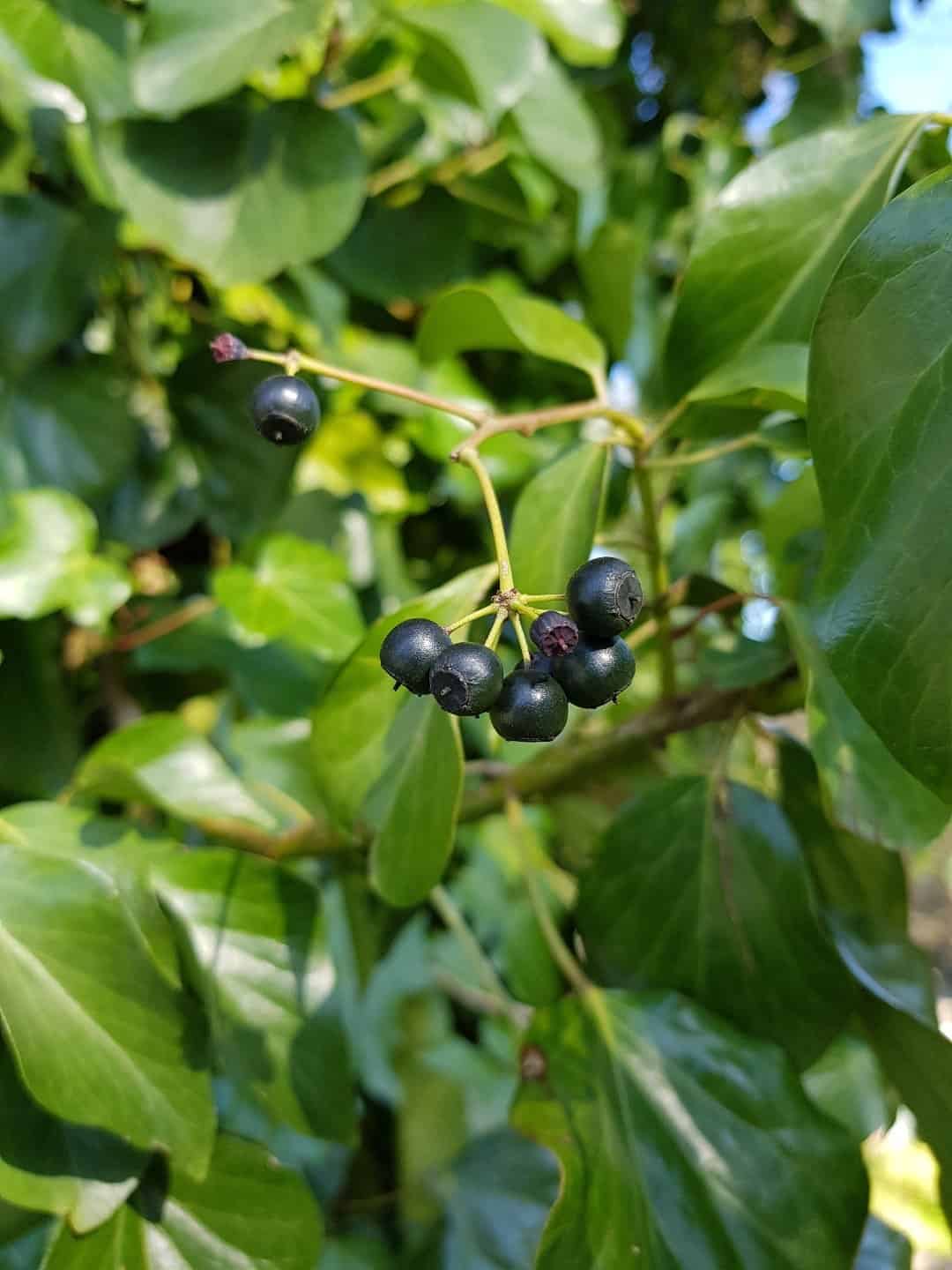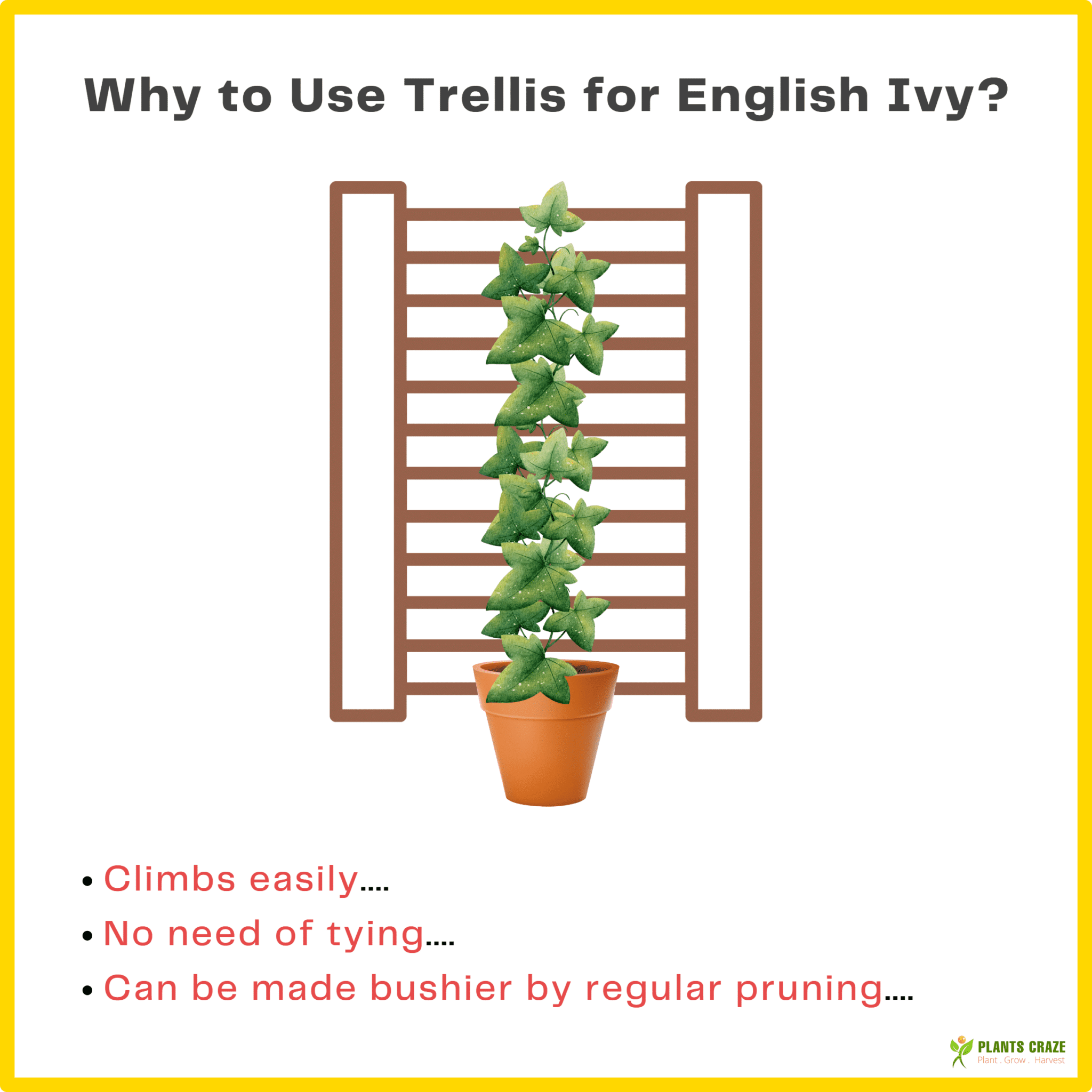Noxious English Ivy bush germinates quickly from seeds by cascading your garden fences and walls, giving a lush look to your backyard.
An English Ivy bush takes 10 years to mature and set seeds. Learn about proven fail-safe tips for collecting and sprouting Ivy seeds!
Table of Contents Show
What Do English Ivy Seeds Look Like?
English Ivy shows similarities in fruit and seed structure with similar Ivy varieties like Boston Ivy.
However, English Ivy begets fleshy and deep purple berries in late winter to early spring, with 1-5 seeds inside.
You can easily harvest the seeds, but the berries are poisonous.
Let us look at a quick overview of English Ivy seeds.
| Feature(s) | Description(s) |
|---|---|
| Morphology | Color: Brown to Black Size: About 5 millimeters Shape: Almost Round Weight: 0.033 grams |
| Flowers | Small Greenish-White Flowers in Umbrella-Shaped Clusters |
| Blooming Season | Fall |
| Fruit and Seed Harvesting Seasons | Late Winter to Early Spring |
| Germination Initiator | Temperature |
| Germination Time | 3-4 weeks |
How Do You Get English Ivy Seeds?
English Ivy produces deep purple berries, which are almost spherical and occur in clusters.
These berries contain the seeds needed for the plant to propagate itself.

However, the fruit is a drupe that looks like a berry and contains 1-5 hard-shelled seeds surrounded by fleshy pulp.
These berries turn from green to dark purple or sometimes black as they mature, which is the right time to pluck the fruits and harvest the seeds.
English Ivy Seeds for Sale
You can buy English Ivy seeds in varieties of online shops, as listed in the table.
| Online Store | Delivery Period |
|---|---|
| ebay | Within 1-30 days after placing an order |
| Amazon | Within 4-5 days after placing an order |
| Seeds World | Within 21-40 days after placing and order |
Steps to Extract English Ivy Seeds
Follow these steps to remove the seeds from the fruits and store them securely.
- Firstly, pick English Ivy berries when they are ripe and ready to drop naturally from the plant.
- Choose the ripest fruit to extract without waiting for the berries to dry.
- Peel the skin from the berries and remove the pulp manually to unveil 1-5 seeds.
- Rinse the seeds and soak them in water for 24 hours to soften the hard outer layer.

You can plant the seeds directly in the potting soil or store them in low temperatures.
English Ivy seeds have a short viable period and don’t undergo dormancy.
How to Plant English Ivy Seeds?
After extracting the seeds from the berries, follow the steps to grow English Ivy from seeds.
Step 1: Prepare the Seed
- Follow these steps to prepare the seeds before sowing.
- Keep the seeds sealed tight in a zip-lock bag with a handful of moist sand in the refrigerator for 30-60 days at 4-5°C.
- Add a few drops of water if the sand is too dry.
- Before sowing, soak them in warm water for 12-24 hours.
Canna Lily Seeds have a hard shell and need proper stratification to sprout. Learn about growing Canna Lilies using seeds!

Step 2: Germinate the Seeds
The best time to germinate the seeds is during early spring.
- Take a seedling starter tray and fill an appropriate potting mix about 1/4 of the way up.
- Poke about 1/4 to 1/2 inch deep holes in the potting soil and plant the seeds.
- Gently cover the seeds with soil and water them.
- Cover the tray with a humidity dome, keep it on the heating mat (at 68°F), and place the setup in bright indirect sunlight.
- If water drops are forming, open up the top of the dome to pass in some fresh air for the seeds.
- You can also cover the seeds with a layer of mulch to lock in the moisture.
- Water whenever the soil feels dry, but prevent sogginess.
- Seeds shall germinate in 3-4 weeks and are ready to go in the garden when the seedlings are 2-6 inches tall.
Step 3: Transplanting English Ivy Seedlings
Lastly, transplant the seedlings into terracotta pots or directly place them in your garden soil.
- Plant them 6-24 inches apart for more dense coverage or 2-4 feet apart for less dense coverage in the garden soil when all the dangers of frost have passed.
- Take 4 inches wide and deep terracotta pot, fill it with the potting mix 3/4 way up, and make a cavity in the center.

- Keep the seedlings in the cavity and fill it with more soil from the sides.
- Offer them primary cultural care requirements during their initial days accordingly.
Learn about the process of extracting and soaking the English Ivy seeds in detail from the video.
Care Tips for English Ivy Seedings After Germination
Seed germination does not mean you will be guaranteed a lush plant, but specific considerations will help the seedlings grow post-germination.
- Offer the seedlings 6-8 hours of daily indirect sunlight by placing them near an east-facing window.
- Keep temperatures around 65-90°F and avoid temperature drops below 60°F. Set a humidifier alongside the plant at 40-50%.
- Repot the plant in porous soil with good drainage having a pH between 5.5 and 7 in a 1-2 inches larger and wider terracotta planter every 1-3 years in spring.

- Feed every 2-4 weeks in spring, summer, and fall using 20-20-20 balanced liquid fertilizer but avoid fertilizer application in winter.
- Water every 2-3 times weekly in spring and summer. Reduce the watering to 1-2 times a week in fall and winter.
- Check the top 1-2 inches of soil for dryness before watering the seedlings again during their days of dormancy.
- Apply neem oil regularly for 7-14 days to deter pest and disease outbreaks until the symptoms subside following an infestation.
FAQs About English Ivy Seeds
Can you store English Ivy Seeds after harvest?
It’s better to plant English Ivy seeds immediately after harvest as they don’t go dormant.
But, you can extend their viability by storing them at low temperatures for a long time.
Can you soak the English Ivy Seeds in warm water?
Soaking the seeds in warm water prepares them to germinate quickly.
However, immersing the seeds in warm water for too long or boiling water can damage the embryo, and the seeds cannot sprout.
From Editorial Team
Set the Time for Applying Pesticides!
Employ the pesticides at daybreak or dusk. You can choose a day following a 24-rain-free period or when the sunlight is dim.


